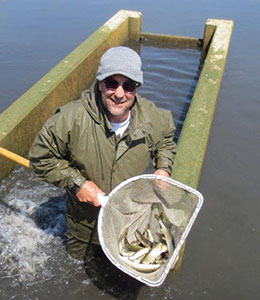- Details
The South Bend Sail and Power Squadron will be conducting a five-week Safe Boating Class beginning April 17 at the Battell Community Center in Mishawaka.
Upon successful completion, students receive a certificate recognized by both Indiana and Michigan for the operation of boats and PWC’s, and may qualify for an insurance discount.
Classes will be Monday evenings from 6:30-8:30 on April 17, 24; May 1, 8 and 15.
Cost is $30 for materials for the first family member and free for any additional family members sharing the material.
Pre-registration is highly recommended. Call 574-367-8572 or e-mail classes@sbsps.org.
- Details
(Provided by IDNR)
April 15 kicks off the first of four Free Fishing Days in Indiana in 2017.
On these special days, Indiana residents can fish public waters without needing a fishing license or a trout stamp. Free Fishing Days are opportunities for families to learn to fish because adults don't need a license.
Non-residents must still have a license.
- Details
By Louie Stout
 Muskie Collection has Hoosier Biologists UneasyIndiana fish biologist Jed Pearson was breathing a sigh of relief last Wednesday, but knew he was hardly out of the woods.
Muskie Collection has Hoosier Biologists UneasyIndiana fish biologist Jed Pearson was breathing a sigh of relief last Wednesday, but knew he was hardly out of the woods.
Pearson is overseeing a muskie egg-taking project on Lake Webster in Kosciusko County. Historically, the brood stock Pearson’s crew collects there provides all of the eggs needed for Indiana’s statewide muskie program.
And that’s what is making Pearson nervous. The lake has been on a downturn the past few years and getting ripe eggs from mature muskies has been tough the past couple of years.
He needs 15 to 20 ripe female muskies to produce the 15,000 muskie sizable fingerlings that the state needs. Last year, the state only captured 11 ripe females and had to set traps at nearby James Lake to fill out their needs.
- Details
(Provided by Tie-a-thon)
Fly tiers from various Federation of Fly Fishers and Trout Unlimited Clubs from around the Great Lakes region will come together April 22 for the 11th annual Tie-a-thon to tie and donate flies benefitting three Trout Unlimited Youth Camps.
The event will be conducted at the Elkhart Conservation Club and the camps to benefit include Illinois Council of Trout Unlimited Youth and Fly Fishing Camp, Kalamazoo Valley Chapter of Trout Unlimited Youth Camp and the Trout Unlimited National Teen Summit which will be held in Michigan.
- Details
(Provided by IDNR)
Anglers headed to Kunkel Lake in Ouabache State Park near Bluffton this spring must follow a largemouth bass rule concerning fish size and the daily bag limit.
For Kunkel Lake, the minimum size limit for keeping a largemouth bass is 18 inches, and no more than two bass may be taken daily. The rule went into effect in 2015 after a bass and bluegill restocking project in 2013.
Any bass less than 18 inches long must be returned, unharmed, to the lake.


